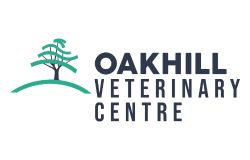Under a general anaesthetic, concsciousness is lost preventing pain and stress to the horse before, during and after major surgery. Horses that are to undergo surgery under general anaesthesia are admitted to the clinic the day before their procedure. They will be thoroughly assessed to detect any potential risks. This involves examining the heart, lungs and checking for signs of infection. Based on the assessment the anaesthetic plan will be modified to suit the horse. The horse will be weighed to ensure accurate drug dosages are given.
Horses are sedated to reduce stress while its neck is clipped and a catheter placed to allow safe access to the horses vein throughout the operation. If the horse has shoes then these will also be removed to minimise injury to itself, with the feet scrubbed to prevent contamination of the theatre and surgical site.
The horse will then be sedated further and carefully walked into our specially designed induction/ recovery box which has a padded floor and walls to help prevent injury. A padded head collar is applied to prevent injury to the head and face on induction.
Two vets induce anaestheisa via an injection and ensure the horse is guided down as safely as possible. Once anaesthetised (unconscious) a breathing tube is placed via the horses mouth into the airway so that anaesthetic gases and oxygen can be inhaled throughout the surgery to keep the horse anaesthetised and safely immbolised.
The horse is then transported into theatre by a mechanical hoist, where it is placed on a padded mattress to help support the horse’s weight and muscles during the surgery. Monitoring equipment is also applied to the horse to allow the anaesthetist to observe the horse’s depth of anaesthesia and monitor its breathing, eye reflexes, blood pressure, heart rate and rhythm.
Once the surgery is complete, the horse is carefully transported back into the recovery box which is kept warm and quiet to allow for a safe and easy recovery. The horse will usually be on its own in the box at this point as movements can be unpredictable, making it dangerous for people to be in with it. However, the anaesthetist closely monitors the horse during recovery via CCTV allowing them to intervene if required. The surgery is only considered complete when the horse is safely standing up.
Jess Watson BSc BVSc Cert AVP MRCVS
Veterinary Surgeon
